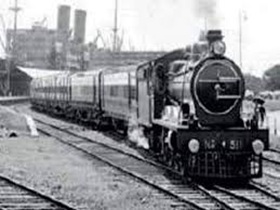Nowadays, an air conditioner (AC) has become a necessity for comfortable living, given the ever-rising urban temperatures and long-lasting summers.
However, many are unversed about the introduction of AC technology in India and the intricate details surrounding its installation.
India’s first air conditioning installation, where modern AC technology was used, is widely recognised to be at the prestigious Rambagh Palace in Jaipur in 1936.
Also Read: Heartless act: Woman dances on DJ truck beside burning funeral pyre; video goes viral

This palace, once the residence of the Maharaja of Jaipur, marked a pioneering moment in introducing modern cooling technology in India. As per historical sources, the air conditioning system was installed by Carrier, a leading American company in the field, representing the earliest known use of electric air conditioning in India. This installation reflected the palace’s stature and desire for modern comfort amidst the traditionally hot Indian climate.
The installation of AC in the Rambagh Palace showcased the early adaptation of Western technology into Indian royal residences. This was decades ahead of the widespread availability of air conditioning in Indian homes or government buildings.
The widespread availability and commercial use of air conditioning systems in India only began much later — in the decades following independence — when the technology became more affordable and suitable for urban buildings and vehicles.
According to automotive experts, the first factory-fitted air-conditioned car in India appeared with the Maruti Suzuki 800 AC/TG variant in 1984, illustrating the gradual expansion of AC technology from elite palaces to common consumer goods.
AC in Indian Railways
India’s first air-conditioned passenger train service began in the mid-1930s, marking a significant milestone in Indian Railways’ history. The ‘Frontier Mail’, starting in 1934, was the first train in undivided India to offer an AC facility. Although the coaches did not have modern air conditioning compressors, the railways used innovative ice slabs to cool the first-class coaches, primarily reserved for British officials before independence. This early experiment laid the groundwork for modern air-conditioned train travel in India.

The first fully air-conditioned train service, however, was introduced later in 1956 with the launch of the ‘Poorva Express’, running between Howrah and Delhi. According to Indian Railways archives, this train featured complete air-conditioned coaches and represented the beginning of widespread use of air conditioning technology in Indian railway passenger services. It set the stage for subsequent premium and superfast AC trains, such as the Rajdhani Express, introduced in 1969.
The 1936 Rambagh Palace AC installation remains a landmark event in the history of Indian air conditioning, symbolising the fusion of tradition and modern engineering.






































